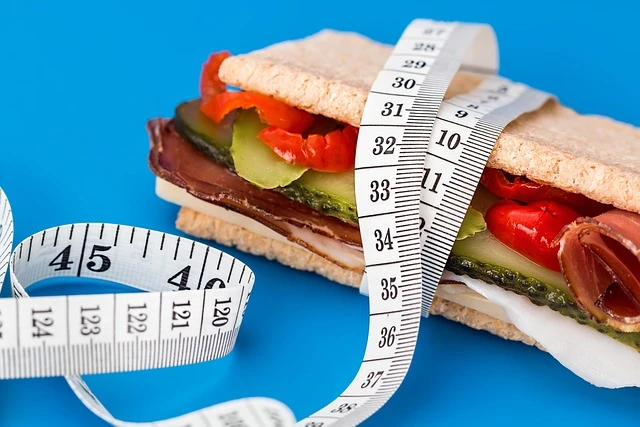The Science of Weight Loss - Understanding Your TDEE and Caloric Deficit

Master the scientific principles behind successful weight loss by understanding TDEE, caloric deficit, and metabolism optimization strategies.
The Science of Weight Loss: Understanding Your TDEE and Caloric Deficit
Weight loss can seem complicated with countless diets and conflicting advice. However, the fundamental principle remains simple: create a caloric deficit based on your Total Daily Energy Expenditure (TDEE). This comprehensive guide will help you understand the science behind successful weight loss.
Understanding TDEE and Weight Loss
What is TDEE?
Total Daily Energy Expenditure represents the total calories your body burns in a day, including:
- Basal Metabolic Rate (BMR)
- Physical Activity
- Thermic Effect of Food
- Non-Exercise Activity Thermogenesis (NEAT)
The Mathematics of Weight Loss
- 1 pound of fat = 3,500 calories
- Safe weekly weight loss: 1-2 pounds
- Daily caloric deficit: 500-1000 calories
- Individual variation factors
Creating an Effective Caloric Deficit
Calculate Your Target Deficit
- Determine current TDEE
- Choose deficit level (20-25% recommended)
- Monitor and adjust weekly
- Account for activity changes
Safe Deficit Ranges
- Minimum daily calories (women): 1200
- Minimum daily calories (men): 1500
- Maximum recommended deficit: 25% of TDEE
- Athletes may require smaller deficits
Metabolic Adaptation During Weight Loss
Understanding Adaptive Thermogenesis
- Metabolic slowdown
- Hormone changes
- Energy conservation
- Hunger signals
Preventing Metabolic Adaptation
- Gradual caloric reduction
- Diet breaks and refeeds
- Resistance training
- Adequate protein intake
- Sleep optimization
Optimizing Fat Loss vs Weight Loss
Body Composition Factors
- Protein intake (2.0-2.4g/kg)
- Resistance training
- Recovery management
- Stress control
- Sleep quality
Exercise Strategy
Resistance Training
- 3-4 sessions per week
- Focus on compound movements
- Progressive overload
- Adequate recovery
Cardiovascular Training
- 2-3 sessions per week
- Mix of intensities
- Activity based on preference
- Energy expenditure tracking
Nutrition Strategies for Success
Macronutrient Distribution
-
Protein: 30-35%
- Preserve muscle mass
- Increase satiety
- Support recovery
-
Carbohydrates: 40-45%
- Fuel workouts
- Maintain energy
- Support recovery
-
Fats: 20-25%
- Hormone production
- Nutrient absorption
- Satiety support
Food Selection Guidelines
Protein Sources
- Lean meats
- Fish
- Eggs
- Greek yogurt
- Plant-based options
Complex Carbohydrates
- Whole grains
- Sweet potatoes
- Quinoa
- Oats
- Legumes
Healthy Fats
- Avocados
- Nuts and seeds
- Olive oil
- Fatty fish
- Chia seeds
Managing Hunger and Cravings
Appetite Control Strategies
- High-volume, low-calorie foods
- Regular meal timing
- Adequate protein
- Fiber intake
- Hydration
Psychological Techniques
- Mindful eating
- Stress management
- Sleep optimization
- Social support
- Progress tracking
Tracking Progress Effectively
Weekly Measurements
- Body weight
- Body measurements
- Progress photos
- Energy levels
- Performance metrics
Monthly Assessments
- Body composition
- Clothing fit
- Health markers
- Fitness tests
- Goal review
Troubleshooting Weight Loss Plateaus
Common Plateau Causes
- Inaccurate tracking
- Metabolic adaptation
- Stress and sleep
- Hidden calories
- Reduced NEAT
Breaking Through Plateaus
- Recalculate TDEE
- Adjust deficit
- Increase activity
- Review tracking accuracy
- Consider diet break
Long-term Success Strategies
Sustainable Habits
- Regular TDEE monitoring
- Flexible eating approach
- Consistent exercise
- Stress management
- Sleep prioritization
Maintenance Phase
- Reverse dieting
- Activity adjustment
- Regular monitoring
- Habit reinforcement
- Support system
Conclusion
Understanding the science behind weight loss—particularly your TDEE and caloric deficit—is crucial for achieving sustainable results. Remember that successful weight loss is a gradual process that requires patience, consistency, and regular adjustments based on your progress and body's response.
Focus on creating a sustainable deficit through both diet and exercise while maintaining essential habits that support your metabolism. Regular monitoring and adjustments will help you navigate plateaus and achieve your weight loss goals while maintaining your health and performance.

